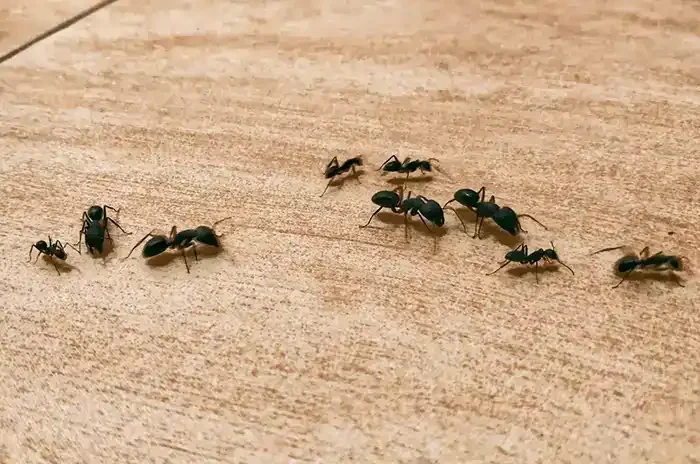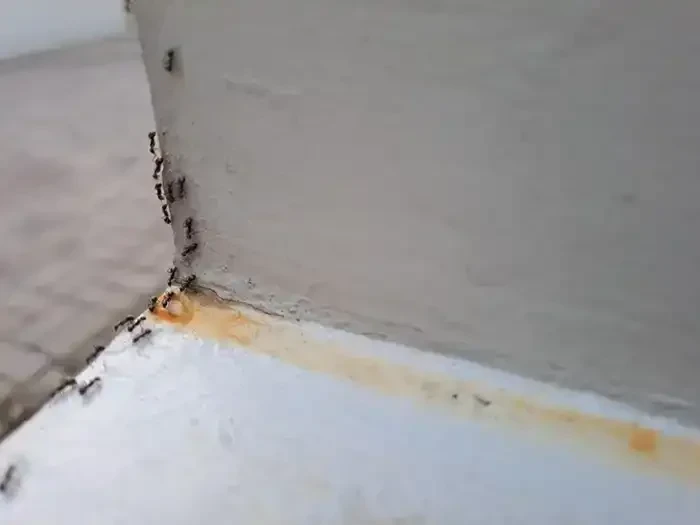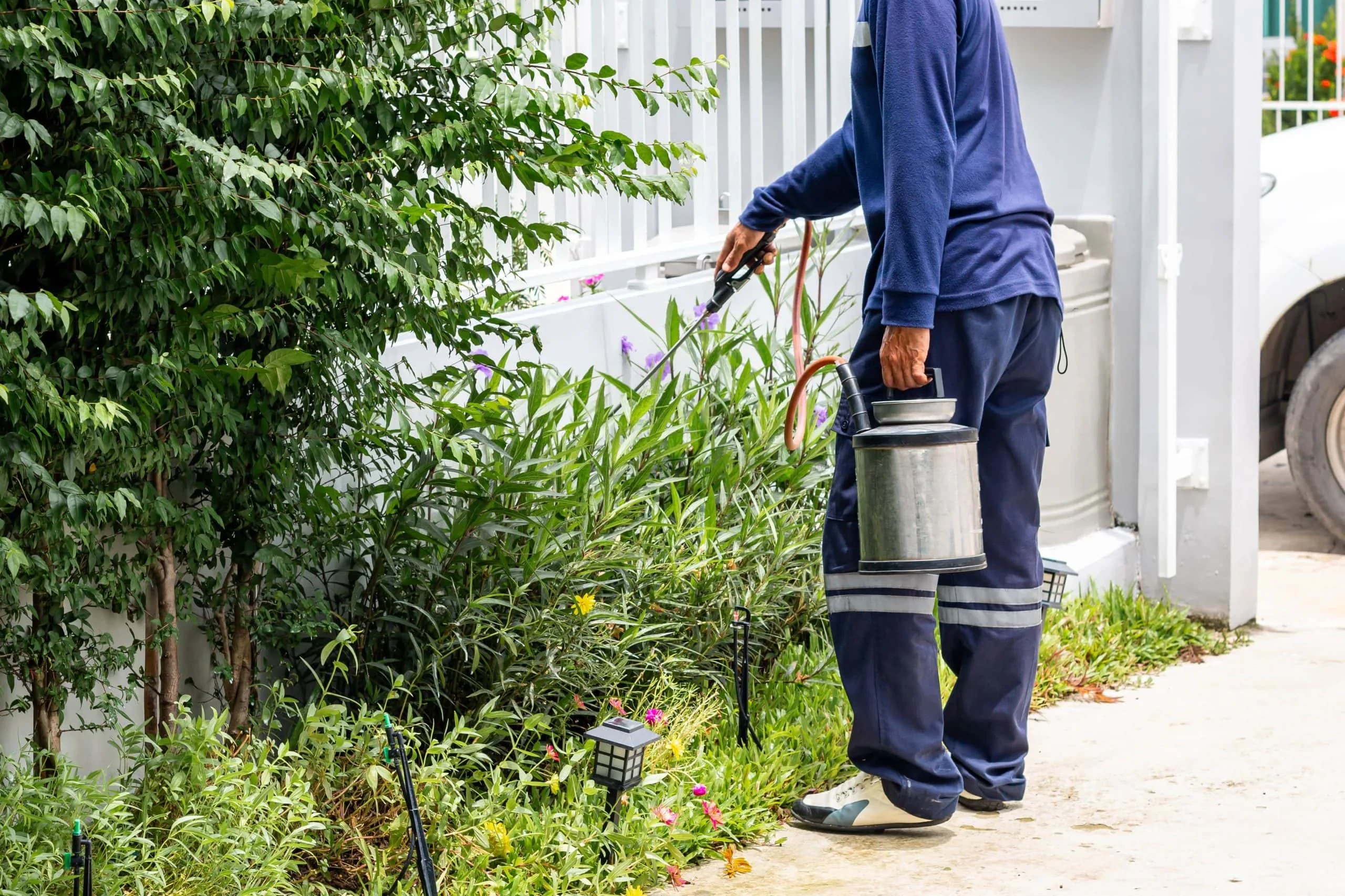Learn the most effective preventive measures to keep ants out of your kitchen for good.
Share:

Summary:
The kitchen offers proximity to an ample supply of food, making it the place that most often attracts ants and other pests. Your kitchen isn’t just convenient for you—it’s paradise for ants searching for their next meal.
Ant invasions happen because of a combination of factors, with sanitation being crucial. Cookie crumbs on the ground draw ants as they forage for food, and they can eat a wide variety of things, including seeds, dead insects, and even sugary secretions from aphids on plants. Once they find a reliable food source, they leave chemical trails for others to follow.
A sudden ant infestation in your kitchen means there is an exposed food source somewhere. Once the ants determine the location, they form long trails to connect their colonies to the food source. Understanding this behavior is the first step toward effective prevention.

Ants are attracted to sweet and starchy foods like sugar, honey, and cornmeal. Therefore, one of the best ways to deter ants is to ensure that no food sources are readily available for them to eat. Keep food tightly sealed in containers or plastic bags and wash all plates and cooking utensils immediately after eating.
The most effective approach goes beyond just cleaning visible crumbs. Keep kitchen surfaces clean by cleaning regularly to remove food and drink particles. Ensure that all your food, especially sweets, is stored in tightly sealed containers because ants have an extremely perceptive sense of smell, with four to five times more odor receptors than most other insects.
Don’t overlook pet food areas. Pet food can also attract ants. Remove pet bowls as soon as your pet has finished eating and clean the bowls immediately to eliminate the scent of the food. Even the smallest food residue can become an ant highway.
Take these steps to keep your kitchen clean: Stop soaking pots and pans, put up leftovers right away, and pick up pet food (especially at night). Because crumbs, spills, and tiny tasty morsels also attract kitchen ants, always clear the dishes. Wash dishware and rinse recyclables, wipe up spills immediately, and store cookies, chips, and other foods in airtight containers.
Create a daily cleaning routine that includes wiping down all surfaces with a vinegar solution. If you store any type of food on your counter, wipe down the area with vinegar. Ants can’t stand vinegar and they will generally stay out of the area. Vinegar is also an excellent disinfectant and will make your kitchen cleaner in general.
Black ants don’t need much space to get inside. Inspect your kitchen for cracks, gaps, and crevices that could provide entry points. The reality is that ants can squeeze through incredibly small openings—gaps you might not even notice.
Ants enter through cracks and crevices in the structure, around windows, through doors or openings in the foundation. They will also use trees and other plants that touch the house to find an entry. Utility lines above and below ground are also avenues used by ants. Eradicating ants requires a one-two punch that includes sanitation and sealing up the foods they crave, as well as blocking their entry points to the best of your ability.
Start your inspection systematically. Inspect the areas where ants are entering your kitchen. Common entry points include gaps around windows and doors, cracks in walls or floors, utility pipes, and electrical outlets. Seal any visible entry points to prevent ants from accessing your kitchen.
Use caulk to seal these gaps. Weather stripping or foam sealant can help for larger openings. Fixing these entry points doesn’t just stop ants; it also helps keep other pests out. Pay special attention to areas where pipes enter walls, around window frames, and along baseboards where small gaps commonly develop.
To thwart entrance to your kitchen, seal up whatever crack, crevice, or opening your ants were using to get inside your kitchen. Then look for other gaps, holes, and tiny openings where kitchen ants might find a way in from the outside. Repair, plug, and seal up these entry points, including under and around window and door frames, foundation cracks, and electrical outlets.
Don’t forget outdoor prevention pest control near me measures. Keep your yard clean of debris and cut off any vines or vegetation that touches or leans onto the exterior walls of your house and windows that can make it easier for ants to enter your home. These natural bridges give ants easy access to potential entry points around your kitchen.
Want live answers?
Connect with a First Choice Pest Control expert for fast, friendly support.
Beyond sealing physical entry points, you can create invisible barriers that ants actively avoid. Natural deterrents work by disrupting their scent trails and making areas unpleasant for them to cross.
Ants are repelled by certain scents, so you can use natural deterrents like peppermint oil, citrus peels, vinegar, or cinnamon near entry points or areas where ants have been spotted. These scents disrupt their trail and discourage them from entering the kitchen. The key is consistent application and refreshing these barriers regularly.
Essential oils are powerful tools for combating your ant invasion. Peppermint and tea tree oils specifically leave a horrible taste in an ant’s mouth, and the fumes from the powerful oils are a strong deterrent as well. Use as many drops as it takes on your windowsills, by doorways, or near any other potential entry point and rub them into a straight line. This oil line will act as a barrier of sorts and will send ants scurrying in the other direction.

Ants need water to survive, and moisture problems in your kitchen can attract them even when food sources are controlled. Ants thrive in moist environments. Fix leaky pipes and consider using a dehumidifier in areas prone to excess moisture, like basements and bathrooms.
In your kitchen specifically, address common moisture sources that homeowners often overlook. Check under sinks for slow drips, ensure proper ventilation when cooking, and fix any condensation issues around windows. Check for condensation and address condensation issues on pipes or surfaces prone to sweating. Use insulation to prevent condensation. Regularly monitoring and addressing these potential sources of leaks will help reduce moisture in your kitchen, making it less attractive to ants. If you discover any leaks, repair them promptly to prevent further issues and discourage ant infestations.
Don’t let standing water become routine anywhere in your kitchen. Make sure fruits or other edibles are behind a cloche or sealed up tightly, don’t let standing water become the norm (ants need to drink up, too), and routinely check on those sealed-off openings to ensure they have no way of getting back in. Even small amounts of water in plant saucers or pet bowls can become ant magnets.
Reduce moisture sources like leaky pipes and standing water, keep all food containers sealed properly and don’t leave food out, try to eat only in kitchen and dining areas and clean up after meals, and clean up food and water that your pets may spill or leave lying around. This comprehensive approach addresses both food and water attractions simultaneously.
The connection between moisture and ant problems extends beyond just providing drinking water. Damp conditions can also indicate structural issues that create nesting opportunities, making moisture control a critical prevention strategy that serves multiple purposes in keeping your kitchen ant-free.
Effective ant prevention isn’t a one-time effort—it requires consistent habits and regular monitoring. The key to ant control is staying consistent, even after you’ve cleared the current infestation. Keep food sealed in airtight containers, regularly clean under appliances and behind furniture, repair water leaks and remove standing water, and trim vegetation around your home that could lead to ants indoors.
Regularly inspect your kitchen for signs of ants. If you notice any ant activity, identify the source and take appropriate measures immediately. By following these steps, you can create an environment that is less attractive to ants and reduce the likelihood of infestations in your kitchen. Consistency is key, so make these practices part of your regular cleaning routine.
Seasonal prevention adjustments matter too. Ants are active year-round but peak in summer, especially June through August when it’s warm with lots of food for them to find and lots of kitchens to invade. During peak season, increase the frequency of your prevention activities.
Periodically check your home for signs of an infestation. If you spot ants or other pests, address the issue early before it becomes a larger problem. Early intervention is always more effective and less costly than dealing with established colonies.
Consider creating a monthly prevention checklist that includes inspecting and refreshing caulk around entry points, checking for new moisture sources, deep cleaning areas behind appliances, and refreshing natural deterrent barriers. This systematic approach ensures nothing gets overlooked and maintains the protective measures you’ve put in place.
Remember that prevention strategies work best when they address multiple factors simultaneously. Prevention is key in controlling ant populations. This includes keeping your kitchen and dining areas clean and free of food debris, storing food in sealed containers, and managing garbage properly. Repairing leaks and reducing moisture in and around your home also help. The combination of eliminating attractions, blocking access, and maintaining cleanliness creates a comprehensive defense system.
Prevention will always be more effective than treatment when it comes to kitchen ant invasions. By eliminating food sources, sealing entry points, creating natural barriers, and controlling moisture, you’re addressing the root causes that make your kitchen attractive to ants in the first place.
As with much in life, prevention is the best defense. Wildly spraying pesticides all over your lawn might feel good, but it’s unlikely to succeed. The strategies we’ve covered work because they target what ants actually need—food, water, and easy access—rather than just trying to kill them after they’ve already found your kitchen.
Remember that consistency matters more than perfection. Preventing ant problems from happening in the first place is one of the smartest solutions to keeping your home pest-free. When prevention measures are properly implemented and maintained, most homeowners find their ant problems disappear entirely.
If you’re dealing with persistent ant issues despite following these prevention strategies, it may be time to consult with professionals who understand local ant behavior and can identify specific problem areas unique to your property. At First Choice Pest Control, we’ve been helping Swartz Creek homeowners create ant-free kitchens with personalized solutions that work long-term.
Article details:
Share: